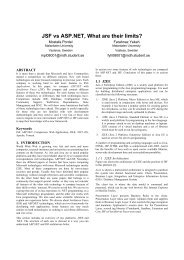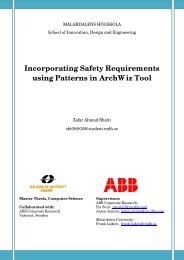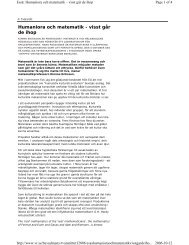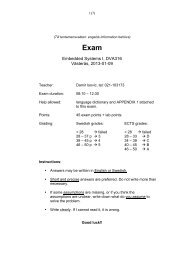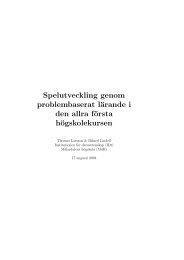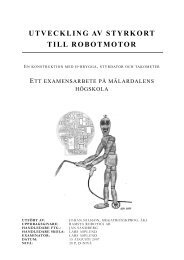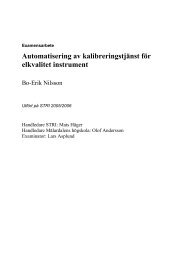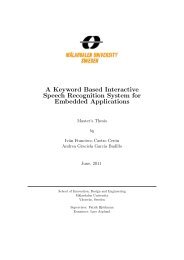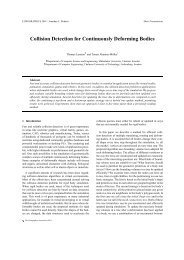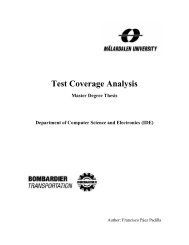UML PROFILE FOR SAVECCM - Research
UML PROFILE FOR SAVECCM - Research
UML PROFILE FOR SAVECCM - Research
You also want an ePaper? Increase the reach of your titles
YUMPU automatically turns print PDFs into web optimized ePapers that Google loves.
Save<strong>UML</strong> profile<br />
Constraints:<br />
[1] BindPortExist: Checks if the port stated in "Bind" tagged value exists (checks that<br />
the component owns the port with the stated name).<br />
[2] BindPortType: Trigger ports, data output ports and combined output ports are not<br />
allowed to be bound.<br />
[3] PropertyConnectors: see the SaveAttribute constraint [1].<br />
[4] PropertyNumberOfStereotypes: see the SaveAssembly constraint [6].<br />
6.3.3.4 SaveClock<br />
This stereotype is intended for modelling the SaveCCM Clock component.<br />
Since Clock is a kind of a component, the Component metaclass is used for the<br />
base classifier.<br />
Base classifier: Component<br />
Tagged values: Defined tagged values are equivalent to the properties existing<br />
in SaveCCM, and those are:<br />
• Body : String<br />
• Jitter : Float<br />
• Period : Float<br />
Constraints:<br />
[1] ClockAttributes: <strong>UML</strong> enables a Component to contain several types of attributes:<br />
ports, attributes and operations. SaveClock component may own ports and quality<br />
attributes (properties with the SaveAttribute stereotype applied). Other attributes<br />
are not allowed.<br />
[2] ClockPorts: According to SaveCCM specification, a Clock component has only one<br />
port – output trigger port. This constraint checks if that condition is fulfilled.<br />
[3] ComponentConnections: see the SaveAssembly constraint [2].<br />
[4] ComponentInterfaces: It is not allowed to use interfaces to define provisions and<br />
requirements of a component. Provisions and requirements are determined by the<br />
ports owned by the component as it is defined in SaveCCM.<br />
[5] ComponentPackagedElements: This component is not allowed to have an internal<br />
structure (neither using packaged elements neither using parts).<br />
[6] NumberOfStereotypes: see the SaveAssembly constraint [6].<br />
6.3.3.5 SaveCombinedInPort<br />
<strong>UML</strong> port corresponds to a SaveCCM port semantically because they both<br />
represent components communication points. In both cases, ports encapsulate all<br />
interaction between the components environment and its internal structure. In<br />
SaveCCM model ports are connected to each other directly by the use of<br />
48



